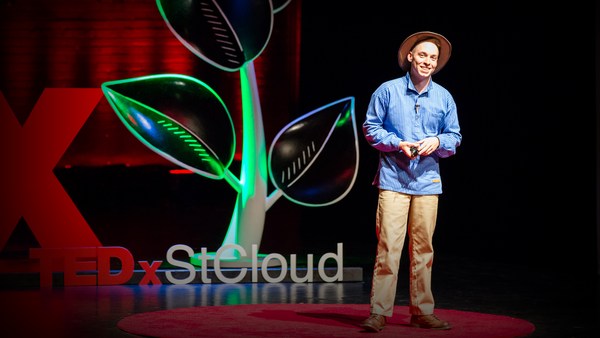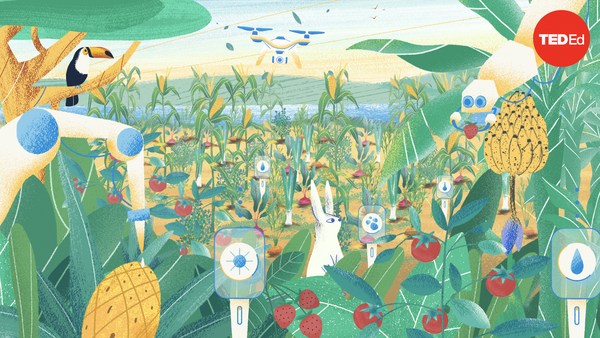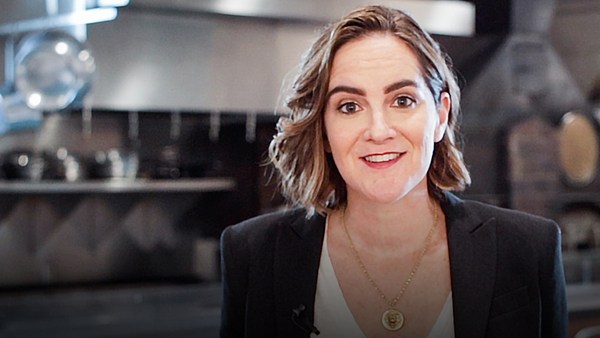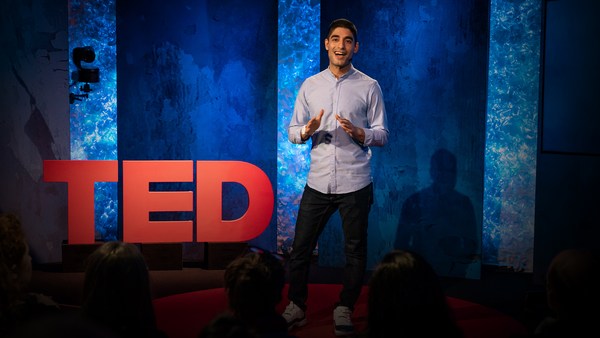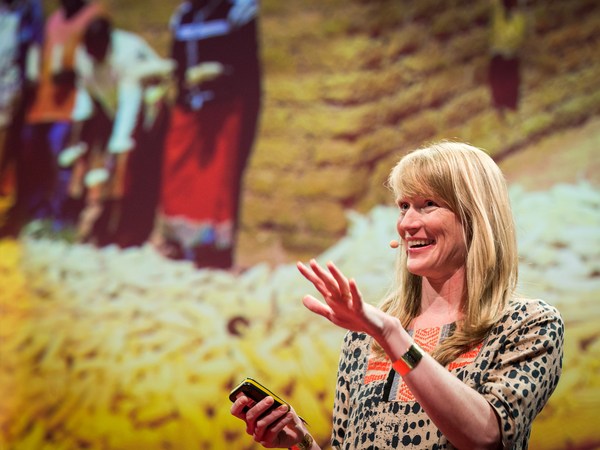Corey Hajim: Here with me today is Beth Ford, the CEO of Land O'Lakes, a farming cooperative that works across the United States and in dozens of countries around the world. And she's going to share with us her vision about how to create a better future for farmers that's both environmentally and economically sustainable. Hi, Beth, thank you so much for being here.
Beth Ford: Thanks for the invitation, I'm looking forward to the conversation.
CH: Let's first talk about the broadband issue. How big of a problem is this and how does it affect the farming community, both as you said, as families and as businesses?
BF: So the estimates have been that 18 million Americans lack broadband access, 14 million are in rural America. Now, having said that, the broadband -- I'm trying to remember what the name of the organization is, did a study and they actually say the number is more like 42 million. And the reason is the mapping is inaccurate. So what could happen is, let's say you have a 7-Eleven in a town and that has Wi-Fi or broadband access because they laid a line. It would show up on the map as though that community largely has broadband and it does not. And so it's a significant issue. Think about the education of your children. I know you have three, I have three. And many of them were doing remote schooling. Well, what's happening on the farm, this is legitimately what's occurring, is that the teacher from the town is driving paper homework out to the farms to give them the homework so that they can continue to go to school. And that's just one example of many. And so this is a major challenge, because if we don't have basic wiring, I can say we need like a 1930s' rural electric initiative where we go across the country and we make this, this should be a right, this should be something that is a basic, like mail delivery and electricity. This should not be just for those who have. And the scale of it is, the estimate is to be 80 to 100 billion dollars to close this gap.
But the challenge of that is that you get the funding and then how is it implemented? We all know you can't just say -- I say, well, I don't go in as CEO, go to the board, say I need 100 million dollars for this tech platform and then, "Approved. Here's the return." And then I go in and I throw it to the business unit heads and I'm like, "You guys decide who's in charge of that," right? And there's a little bit about it, it becomes a jump ball between the FCC and the USDA and then the governors, and suddenly we don't have enough and we're on the couches looking for quarters and nickels to pay the pizza guy so that we can finish this off, as though it's not a priority, as though it's not a priority. As though it's somebody else's problem. And it is all of our problem. This is a national security issue. I cannot say it more directly.
So it's a major issue because I'm concerned about speed here in addition to the funding. And the good news is this has been bipartisan support. Whenever I speak, I speak for the National Governors Association, the State Department of AG, I mean, name it. Name the administration official, I've done it. This isn't a bipartisan issue. It has to be a prioritization issue. It has to be something that we decide as a country is a priority. And it means in every state.
CH: I've heard stories about, "Well, you've put Wi-Fi" or in some of these communities, they've put Wi-Fi on the buses and then, you know, kids are sitting outside the local library or the local McDonald's to do their homework. And it's just so unfair.
BF: It's unacceptable.
CH: Unacceptable. Unacceptable is the right word. It also affects the businesses, right? Farming as a business because there's so much technology being used.
BF: Well, there is. So oftentimes I'm at an event and they're talking about all this cool new tech. And listen, I just say we use satellite technology, we have big data, data and analytics, John Deere's tractors are auto-steer. And I'm like, "Are you using that?" "No." "Why?" "Well, because I lose connection. And so I can't I can't utilize it." You know, there's so many exciting investments and innovation occurring in the sector that will make farmers more efficient, will be better for climate and the environment, I'll talk a little bit about that in a minute, but none of that can be used if we don't have the appropriate technology access, if we don't have broadband. These are data-intensive models and they require bandwidth to do so and to utilize them effectively. So it's a major issue so that from a business perspective, it's an efficiency, it's a sustainable production issue.
And then back to the community, again, stable operating environment. You know, I constantly have my mother in my ear, like, "You're only as happy as your least happy child," right? And why is that? Because, you know, if you can't feel confident your child has the best education, has access to a doctor, pretty hard to be focused on your business. And farming is a business. And so we have to recognize if there's a number of hospitals, local hospitals have shut down, there's no banking, no housing. It doesn't work to have a stable operating environment in these farming communities. And yes, directly, you cannot use the new innovation and technology that hide the data utilization if you do not have broadband.
CH: So the technology is a challenge, and as you said, it's so important for the business, and you mentioned climate. So I'd love to dive into that because in addition to, sort of, challenging market dynamics, you also have climate volatility and an increasing weather volatility and technology's helping to address that. Can you talk a little bit about the technology that's being used by farmers to manage that volatility?
BH: Well, first of all, what you're helping them do is make improved decisions that make their farms more resilient and that they can make more sustainable business practices. So what we've started, we have a business called Truterra, it's run by Jason Weller, who used to run in our CS under the Obama administration. And what this business does, it works in multiple ways. We work through our local retailer, the agronomists. They get insights from our Truterra insights engine. It literally is at the farm level, acre by acre, where they can understand what the soil type is, what the water situation is, all of those things, what kind of tractor do you use, how many passes at the field do you make. So, we can make improved, sustainable production decisions. More recently, probably just last week, we announced our Trucarbon platform, which is a systemic way that we can work with farmers, databased. This is partnered with the Soil Health Institute, with many environmental groups, to create a carbon credit. So where the farmer is making a decision that is improving carbon capture and at the same time is improving their own profitability, and then is able to monetize that. Our first customer was Microsoft, and they're using this for carbon credit.
So why is this so important? In addition to the fact that we have validation and this is an evolving marketplace, carbon and carbon credits, carbon offsets, it's an unstructured pricing environment. And I think all the studies would show that agriculture is a great way for us to address this issue using basic photosynthesis. So if we if we agree that, then we have to say, what is that pricing environment? One of the fundamental things we started with is the farmer. In fact, Secretary Vilsack more recently said in his confirmation hearing, we've got to start with the farmer and that farmer has to be profitable when making that decision. It's a virtuous circle. So we want the farmer to take action. But you can't just say, "Everybody put on cover crops. That's the best." Because then that farmer isn't profitable, and then how do we make sure that we can sustain our food production and the farm?
So we're working with this inside engine, with our agronomic advice, with soil health and soil testing, with any number of pieces of data and process and expertise. And that's what differentiates, I think, our approach, that it goes right back to the farm level but leverages technology. We have a partnership with Microsoft, their FarmBeats program, their airband. They're working with us on closing this digital divide in different communities so we can take advantage of these opportunities. And at the same time, as I said, they were our first customer for our carbon credits. And one of the reasons I'm so focused on this, not just because this is an evolving marketplace, and because climate change is something we have to address and we want to address, and I believe farmers are part of the solution. They are a major part and a major opportunity for solution. It also is another revenue source for farmers. And go back to that statistic I gave you about the "hobby" farmer, about the fact that they're working off the farm to retain their farms. And the reality is, there's going to be even more disruption in the coming years in this sector. It will be in some ways driven by the electrification of the transportation sector. That means biofuel utilization and a significant portion of the corn crop goes into biofuels, ethanol. And if that is no longer needed, because we've gone to electric vehicles over the next 10 years, what happens to corn price, to land values? And at the same time soybeans, some of that is used for biodiesel. So that will be a major disruptor to row crop farming. So we've got to point farmers, they're pretty smart, to the right levels of investment they can make for other sources of potential revenue for their farms. And I think that this is a great way to think about it.
CH: Right, so you feel like the things that farmers can do to be more environmentally sustainable can also help them economically?
BF: Exactly. And it must. It must. And that's why this model that we have, Truterra Insights Engine, is iterative almost. Hey, if I do these three things, what happens to my profitability? And it might be tied to a program that's available at the state level, it might be tied to improve variable rate application of your fertilizer where you don't put everything on at the same time and then have it seep into the soil. Instead, you look and you use your satellite technology and everything and you say, "Oh, I'm going to put partial on now, and maybe I don't need as much later." Every piece, every acre on a farm is not the same and doesn't have the opportunity to yield as much, one acre to the next. And with that then, where do you make the right investments? And a model like this helps you understand where to make those investments. We also have applied research plots, answer plots, where we help with our agronomists to help improve the planting decisions a farmer may make. So there's any number of variables, and I say it makes a farm more resilient. And let's agree, we're going to get into a situation where the financial markets and the bankers are going to say, you need to be making investments that make your farm more resilient, given the amount of disruption we're seeing already, right? Climate. Think of the fires in the west, the freeze in the south, in Texas, and we're going to see these events over the next number of years. We have to make the farm more resilient. That makes it more profitable for the farmer. It helps their ability to make an investment that we all know is necessary.
CH: But you mentioned that it can also be a revenue source. Can you give an example of how, you know, a climate mitigation technique also provides revenue for a farmer?
BF: Well, there's two things. One, I was just mentioning more directly, this true carbon, where you're generating a carbon credit because you're able to prove the new practices you're putting in place is going to reduce that. You use that proof for the soil test in advance, and then a number of years later. You may use a stabilizer, for instance, and that would mean that you don't have some of your nitrogen you're putting on or using, kind of, seep into the soil. That, in and of itself, means you have less of investment you have to make in those products as you're putting on fertilizer or planting different crops. But then more directly, that credit that you develop, because this market is evolving, can be sold. So what we're doing with the Microsoft partnership here and their purchases, if you are able to prove this tonnage reduction, it's like 20 dollars a met ton for carbon credit, so it's a more direct line payment for that in and of itself. And that's an evolving marketplace we're going to see. We're also partnered with Nori, it's a platform like eBay, and they want to be the eBay of carbon credit trading. This is very early stage, but it's an exciting opportunity because we know it's going to take this kind of innovation, this creation, this technology to address climate change. And the farmers can be in a position where they can be part of the solution.
CH: Thanks for being here, Beth.
BF: You bet.
